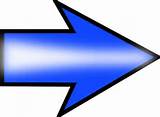It
now seems that in Kangaroo Lawrence conjured up
an amalgam - as we shall see, he made much use of such
amalgams - of his Whitmanesque League of Comrades and
Australia's actual secret-army structures. (In Kangaroo
he alludes to Walt Whitman's League of Comrades in the
chapter about the "fictional" union leader,
"Willie" Struthers.)
Today we know that the "little squads" in Scott's
secret army were organised, not primarily in units of
10 or 20, but in multiples of five - that being the number
who could fit into a car (the organisation of the secret
army being, in essence, a mobilisation plan based on car-ownership
- hence its Sydney nickname "the garage", and
Jack Callcott's "profession" in Kangaroo..."garage
proprietor").
In the text of the novel there are numerous correlations
between Lawrence's "fiction" and historical
fact. Perhaps the most persuasive one comes in chapter
5 "Coo-ee", when Callcott tells Somers about
the background of Diggers/Maggies organisation:
|
"How
long have you been started?" [asked Somers]
"About
eighteen months - nearly two years altogether."
[replied Callcott]
|
The King and Empire Alliance was formed following a public
rally in Sydney in July 1920, following the election of
the Storey-Dooley Labor Government in March of that year
- "nearly two years" to the very week when Lawrence
and Scott (I argue) had their secret-army conversation
on the beach below "Wyewurk" in early June 1922.
Over the ensuing years - decades - of the research, other
correlations between fact and fiction emerged.
My colleague (now Professor) Andrew Moore found a telling
one when interviewing people on Sydney's North Shore who
were familiar with the Old-Guard milieu.
(Traditionally, those who lived on the northern side of
Sydney Harbour - referred to as "the North Shore"
- made up the more conservative element in Sydney society.)
One woman he interviewed, a Mrs Jeffery, recalled that
at bridge parties on the North Shore in the 1930s Jack
Scott had been "ribbed" over his portrayal as
Jack Callcott in Kangaroo.
